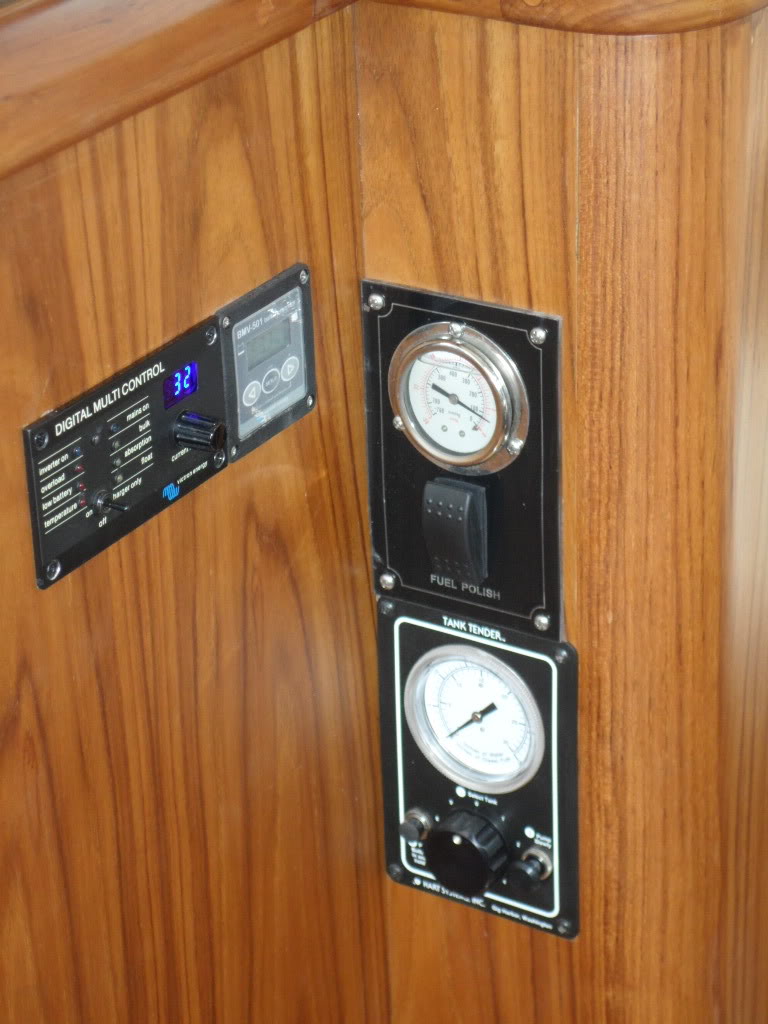dvd
Senior Member
Someone once said that good judgement comes from experience, and experience comes from bad judgement. Well, I'll have better judgment after yesterday's experience.
After a few days of wonderful cruising on Chesapeake Bay, with water so flat it would have been great for water skiing, the wind picked up while we were at anchor Friday night 15-20 knots with sustained gusts up to 30. No problem in a protected cove, but took off Saturday AM to cross the bay back to home port 2 hrs. away on the Eastern Shore. The Northwest winds kicked up 2-3 ft waves at frequent intervals - handled OK, but a bit uncomfortable. I had run my fuel level down pretty low, thinking I would have my tanks cleaned soon, so was carrying only about 30 gallons (normal fuel burn is 2 gal/hr.). About 1 1/2 hrs into the crossing the engine died. Dropped anchor, went down in the rolling, hot bilge and changed the primary fuel filter (which didn't really look too bad), bled the system and it started back up. Ran for about 15 minutes and it died again. Dropped anchor and looked at the new filter and it looked pristine. Re-bled the system at the secondary filter, but it wouldn't start. Re-bled the system at the injector but still wouldn't start. Finally called for a tow to get back home (about three miles).
So, even though I saw fuel drip out as I bled the system (under less than ideal conditions!) I am assuming that somehow I got an air lock -- perhaps from the pick-up in the tank pulling in air as the low fuel level sloshed around in the heavy seas.
Tucked the boat into its slip and came home - will be going back down in a couple of days to figure it all out. Any other ideas?
Thanks,
dvd
After a few days of wonderful cruising on Chesapeake Bay, with water so flat it would have been great for water skiing, the wind picked up while we were at anchor Friday night 15-20 knots with sustained gusts up to 30. No problem in a protected cove, but took off Saturday AM to cross the bay back to home port 2 hrs. away on the Eastern Shore. The Northwest winds kicked up 2-3 ft waves at frequent intervals - handled OK, but a bit uncomfortable. I had run my fuel level down pretty low, thinking I would have my tanks cleaned soon, so was carrying only about 30 gallons (normal fuel burn is 2 gal/hr.). About 1 1/2 hrs into the crossing the engine died. Dropped anchor, went down in the rolling, hot bilge and changed the primary fuel filter (which didn't really look too bad), bled the system and it started back up. Ran for about 15 minutes and it died again. Dropped anchor and looked at the new filter and it looked pristine. Re-bled the system at the secondary filter, but it wouldn't start. Re-bled the system at the injector but still wouldn't start. Finally called for a tow to get back home (about three miles).
So, even though I saw fuel drip out as I bled the system (under less than ideal conditions!) I am assuming that somehow I got an air lock -- perhaps from the pick-up in the tank pulling in air as the low fuel level sloshed around in the heavy seas.
Tucked the boat into its slip and came home - will be going back down in a couple of days to figure it all out. Any other ideas?
Thanks,
dvd




 Don't know why, but I thought you had twins. Gotta love that tow insurance!!
Don't know why, but I thought you had twins. Gotta love that tow insurance!!
